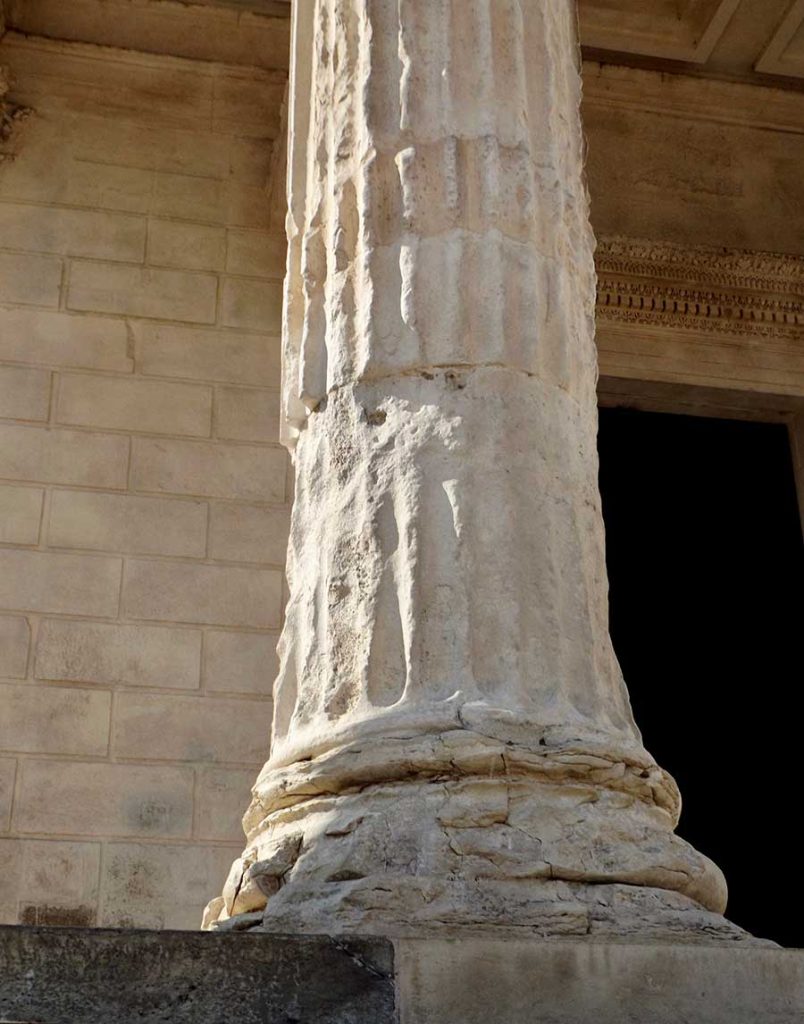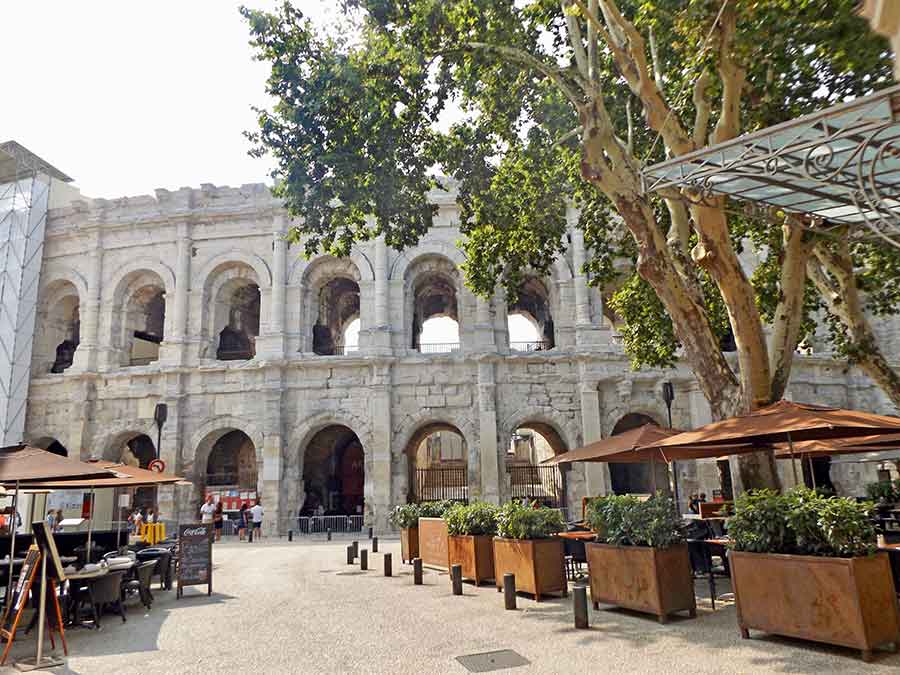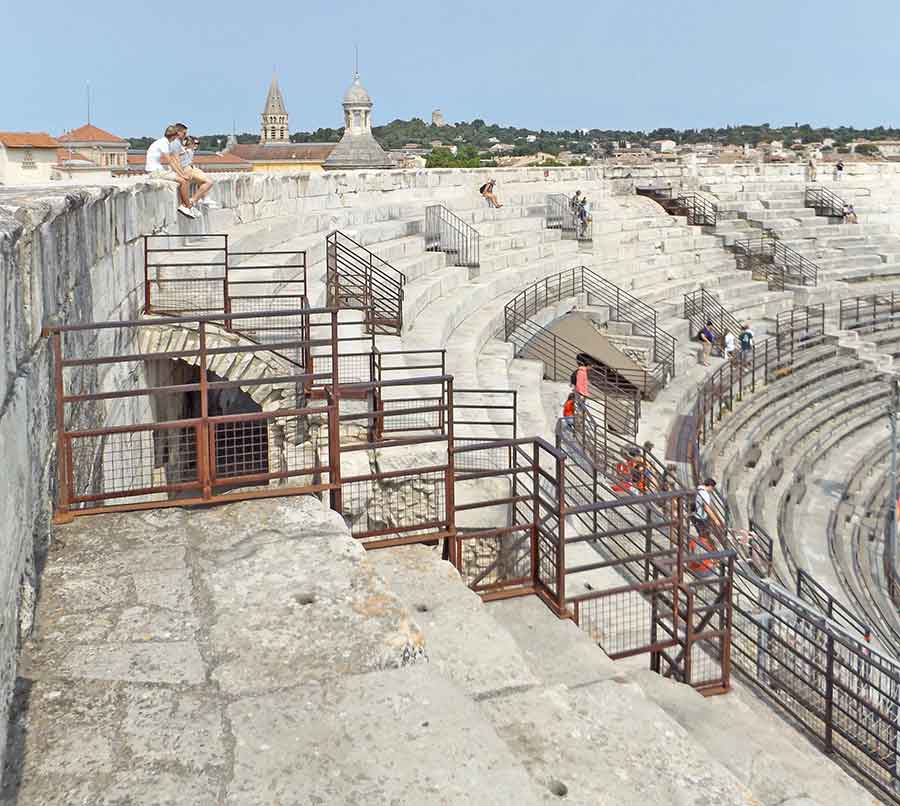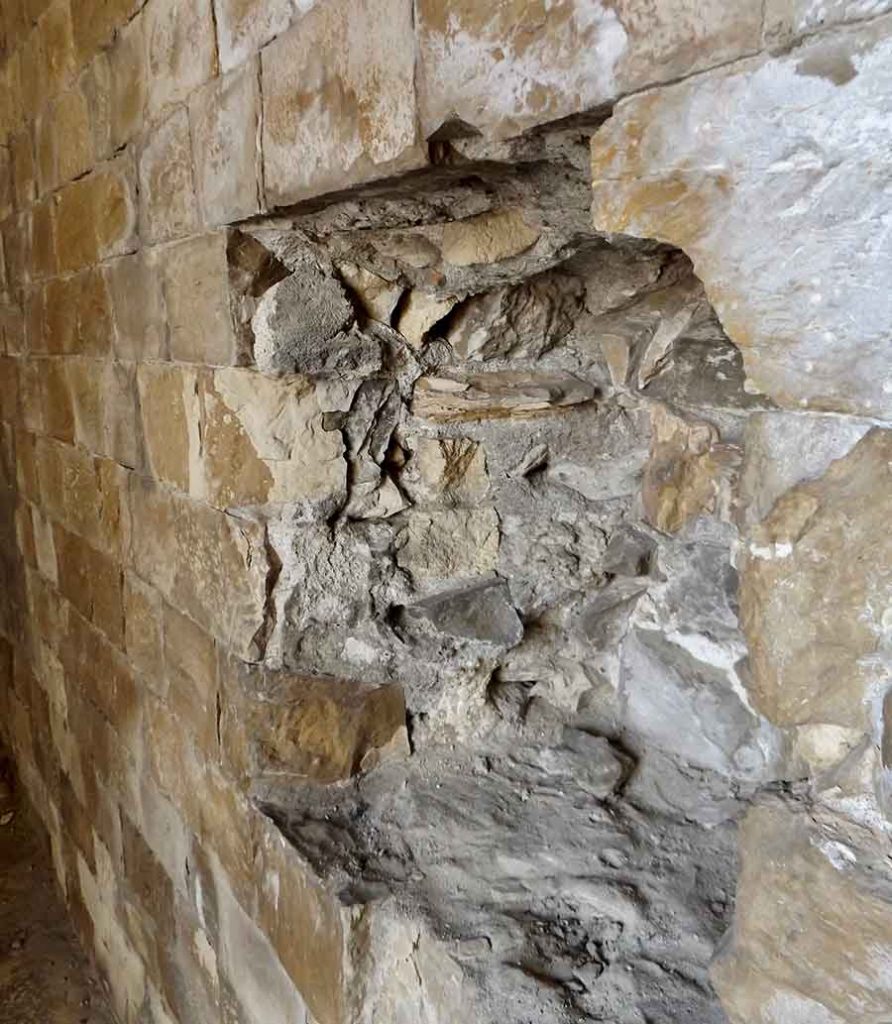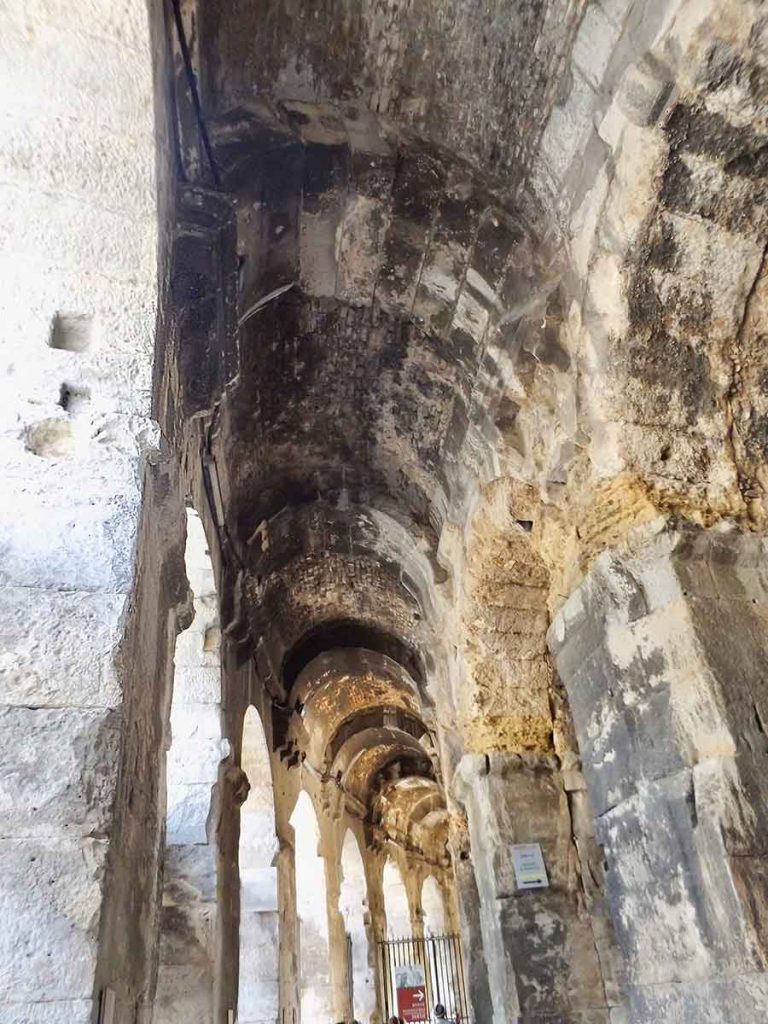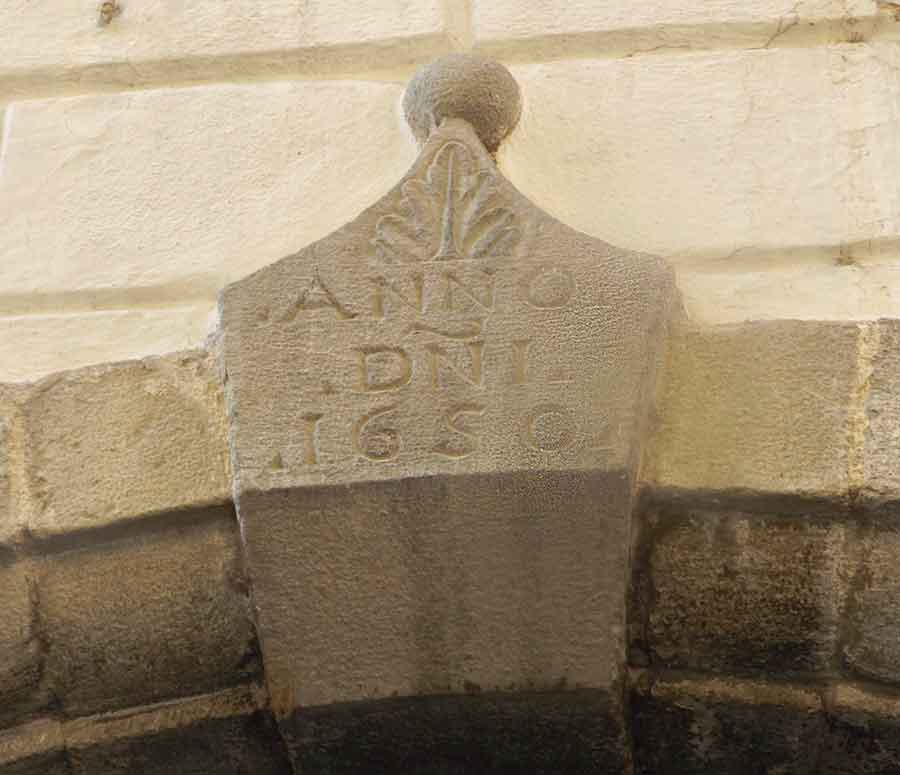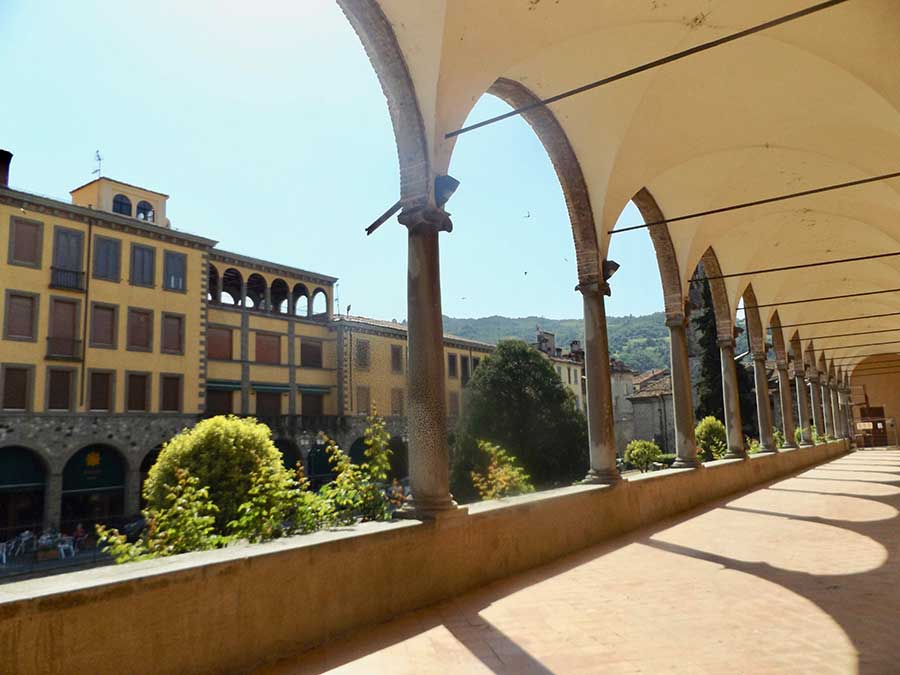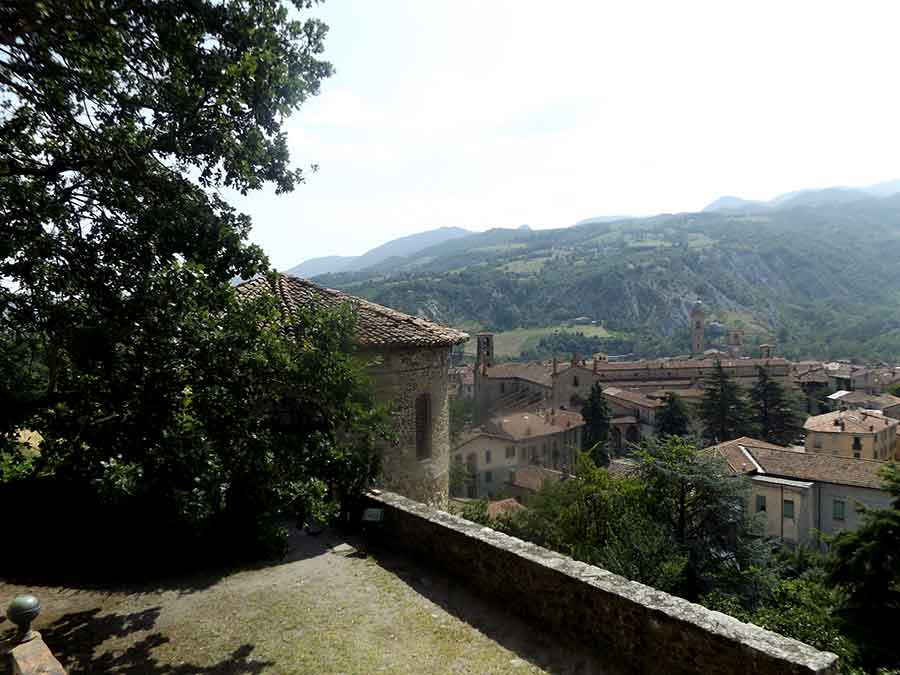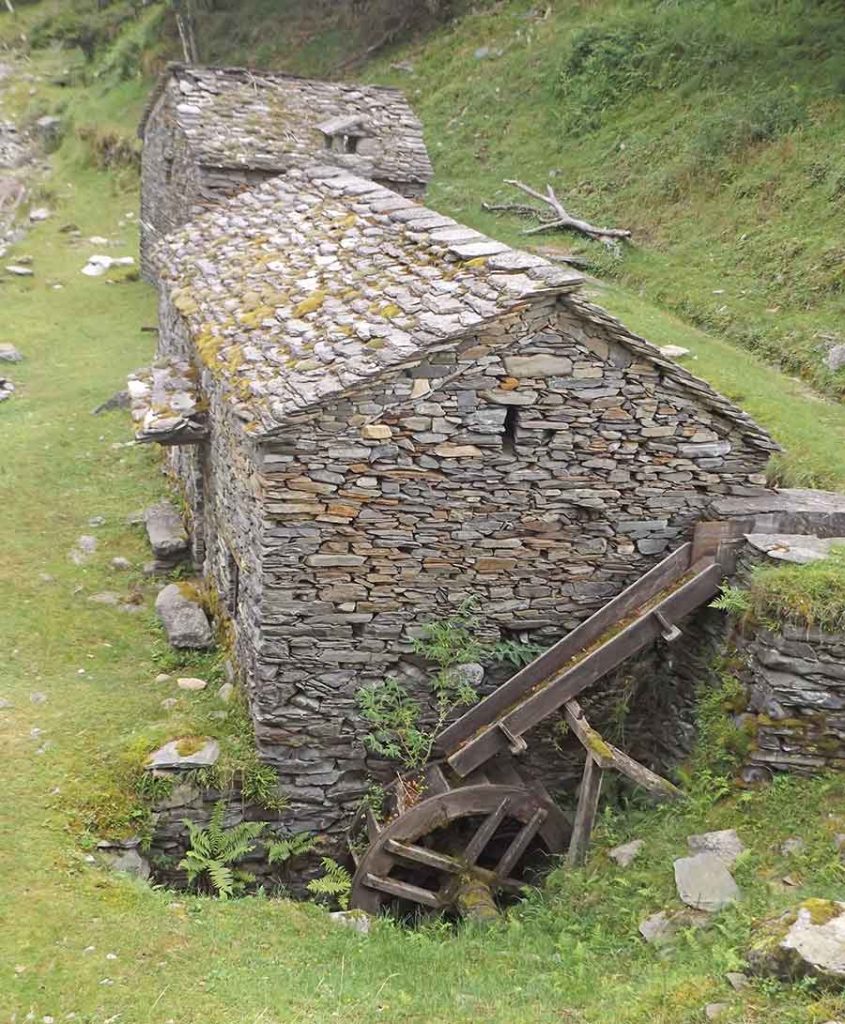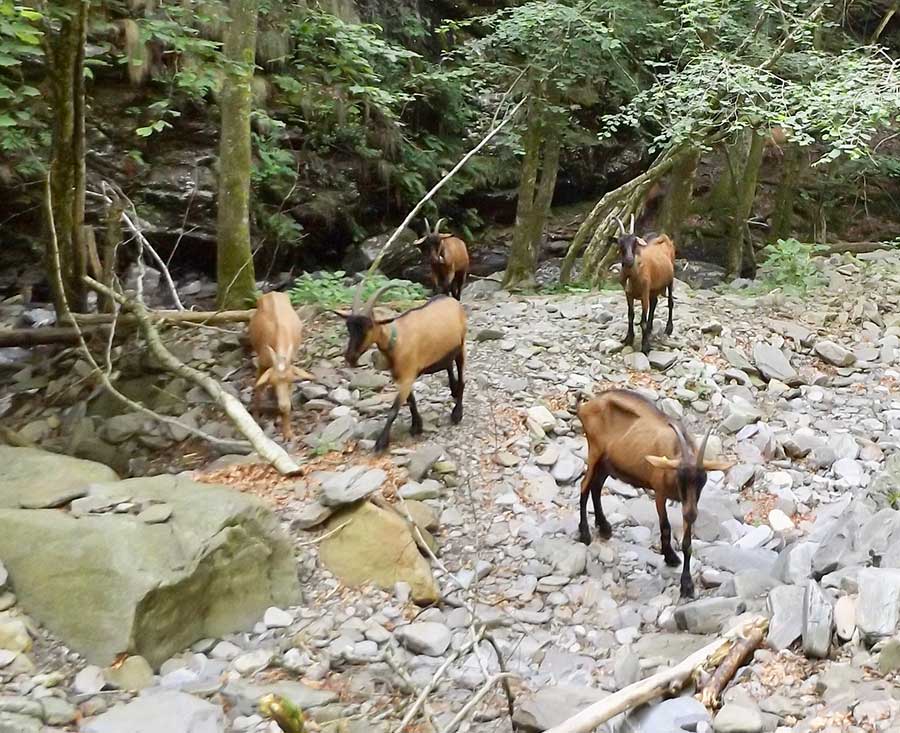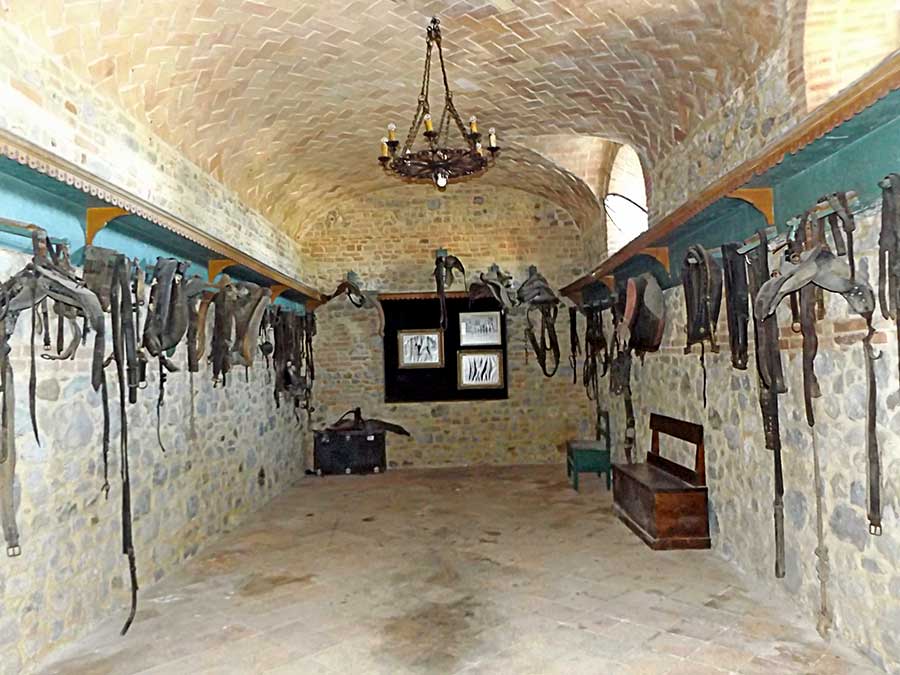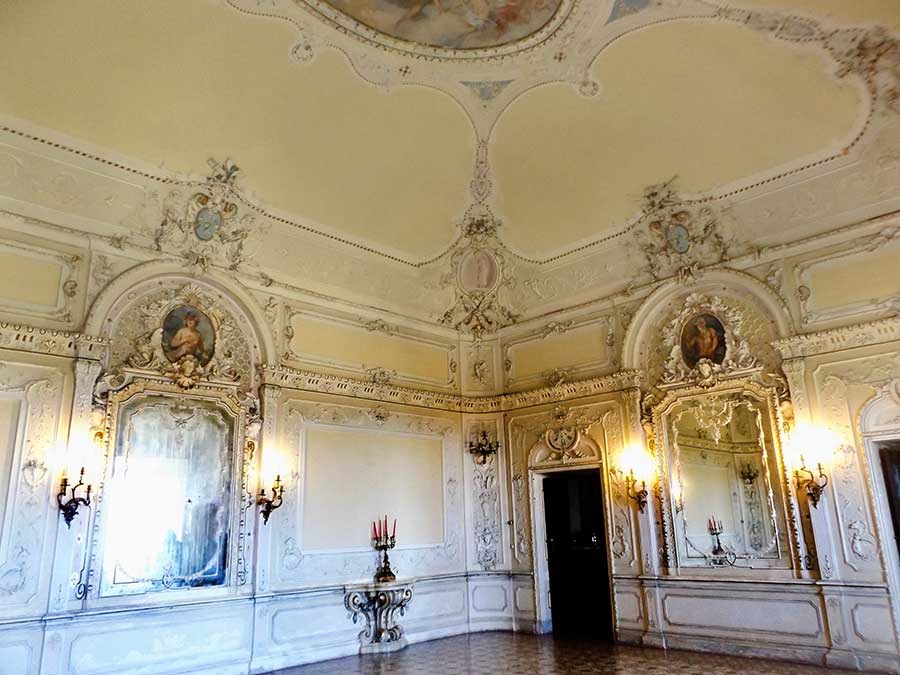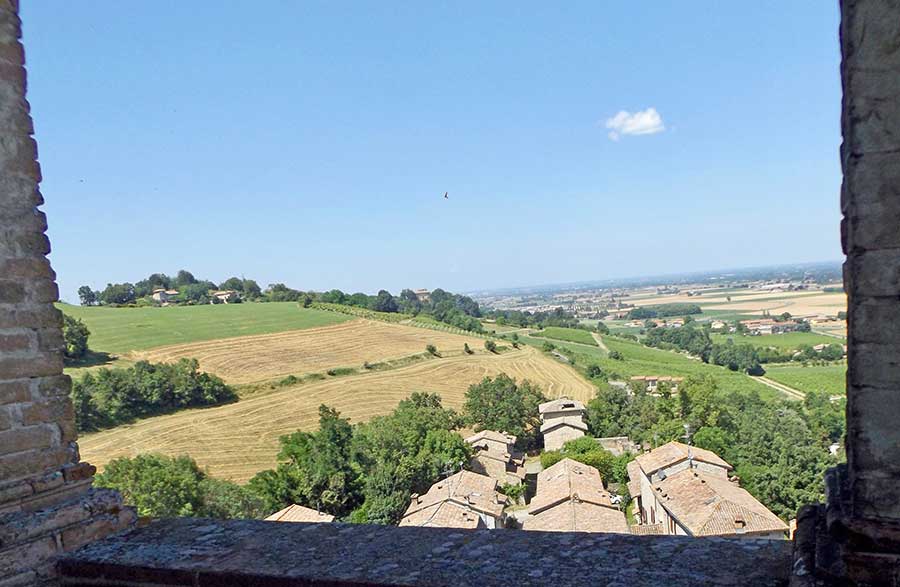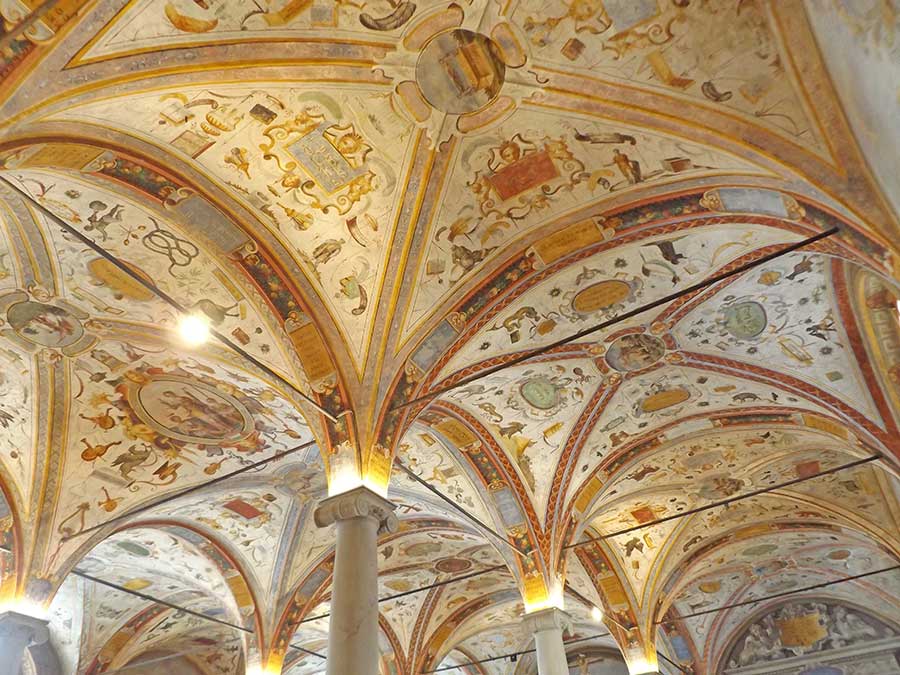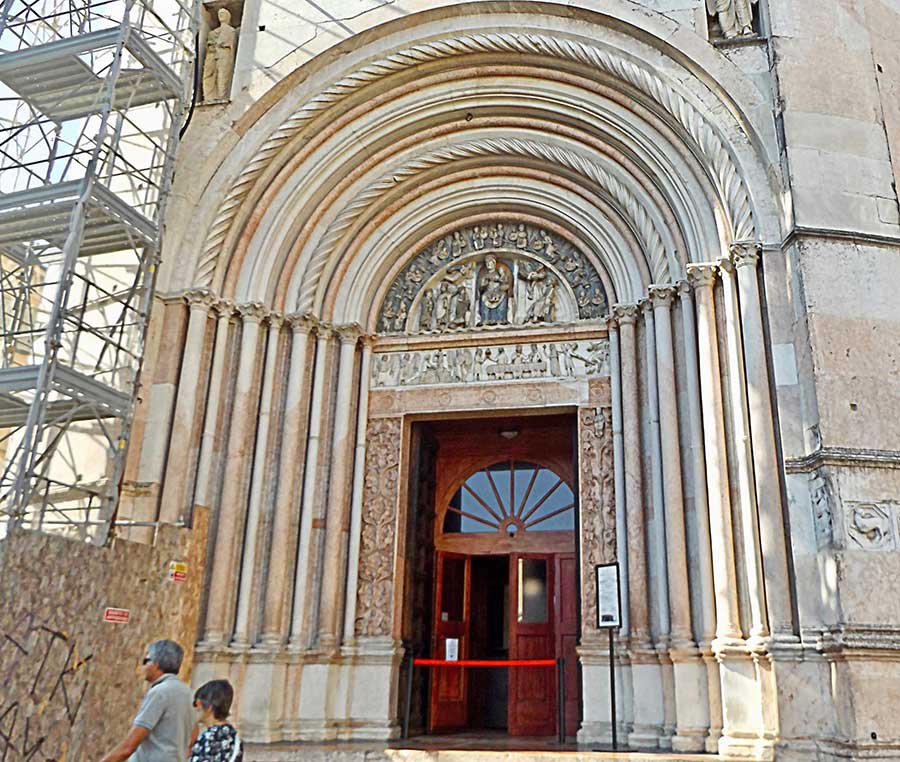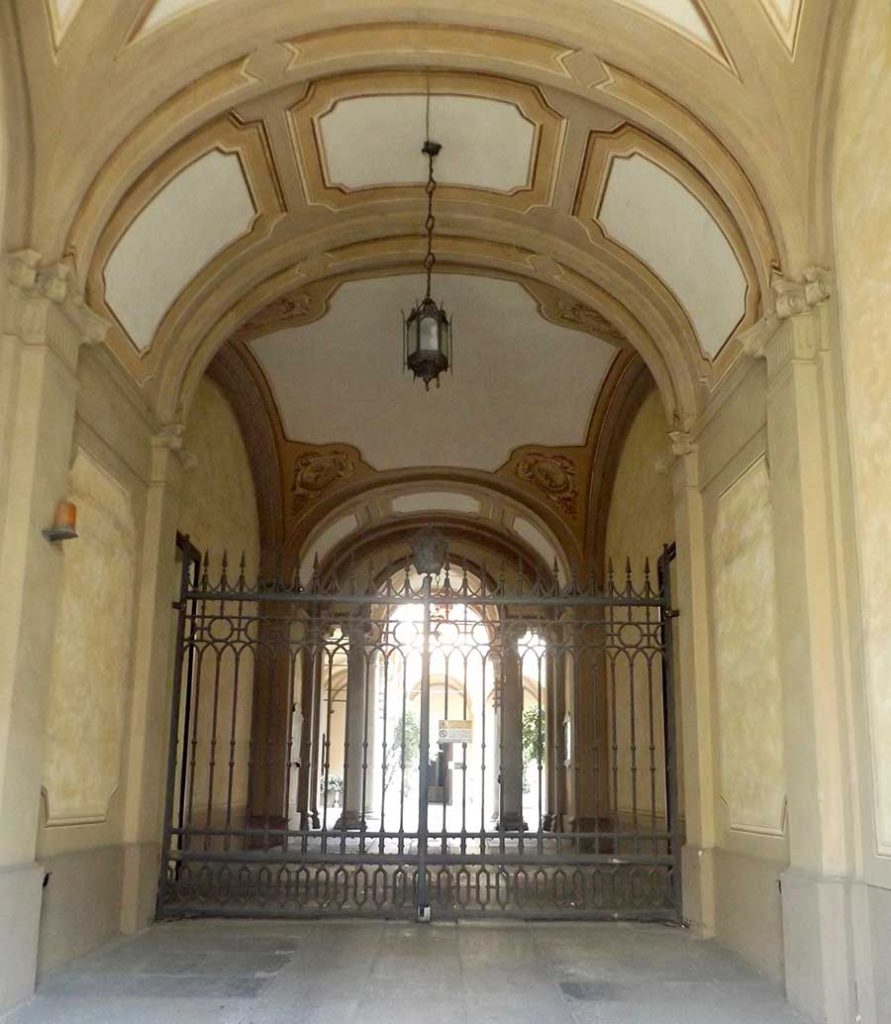To replace the ancient water sources that had supplied Nîmes for centuries, the huge Fountain Gardens were built in the mid-18th century.
Remnants are still there of the original water holding basin on the hill, which would have received the water via aqueducts, including the Pont du Gard where I will take you next. As these remnants, like those at Pompeii, are extremely rare, I tried to visit, but it was closed on a Sunday.

Fountains abound, with walkways shaded by large plane trees.

Fish and ducks and pigeons make use of the water, as does the occasional frolicking dog, and once I even saw a swan.

Even the gates are guarded from climbing trespassers by decorative extensions – rather more attractive than rolled barbed wire.

My favourite ruin was this Temple of Diana, from the 1st century BC: possibly not to Diana, possibly not even a temple. Romantically shrouded in mystery and time…

The central basin has this Nymph statue… with attendant pigeon, but as usual I wonder why the wingless cherubs below look so miserable.
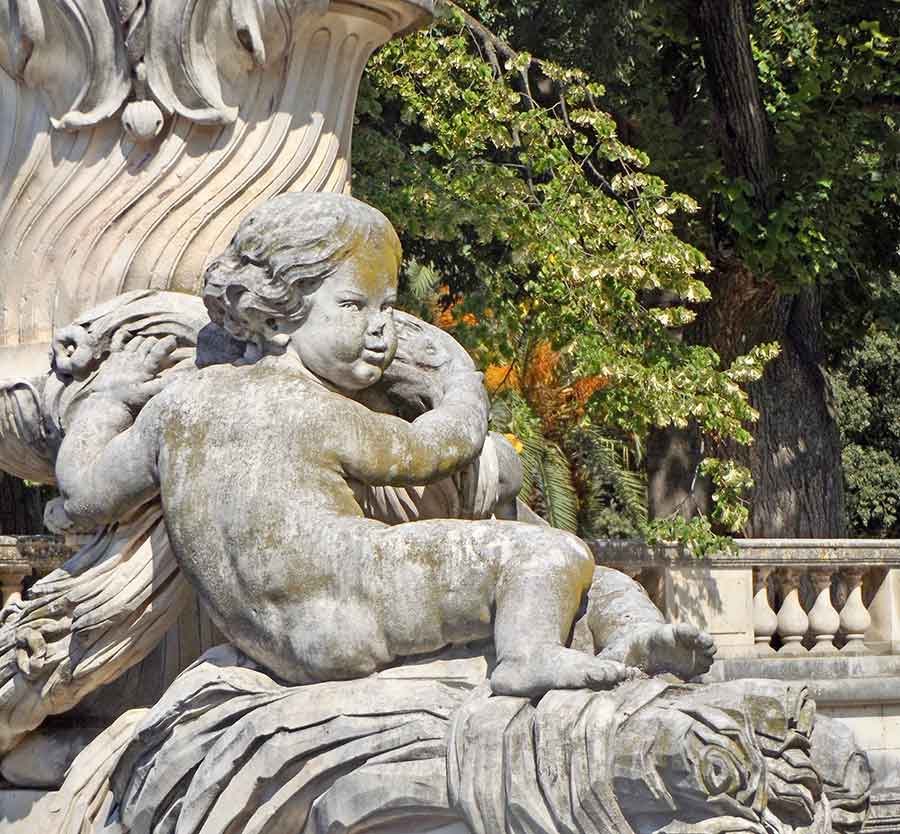
This one looked positively demonic.

The Gardens were full of statues, but I especially liked this gentle one to Love… quite young love too.
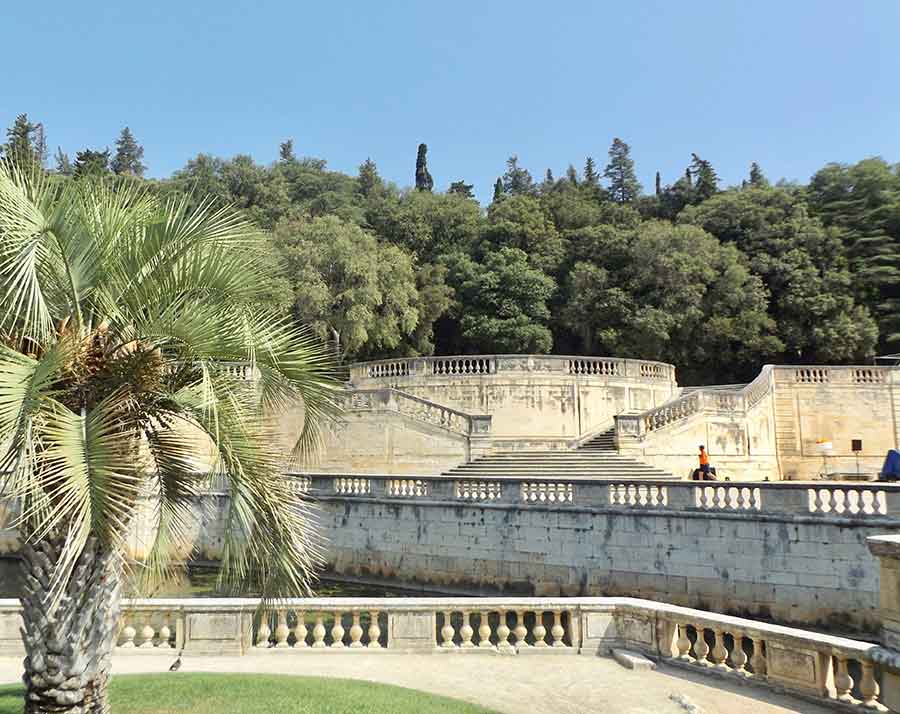
From the formal pools and waterways, paths wind up through a shady forest to the 36 metre high Tour de Magne, once part of the defensive Roman walls around the city.

I had intended to climb up the internal spiral stairs, but I chickened out. From the outside, looking up at those who had made it, I knew I’d been wise. Bugger the view.
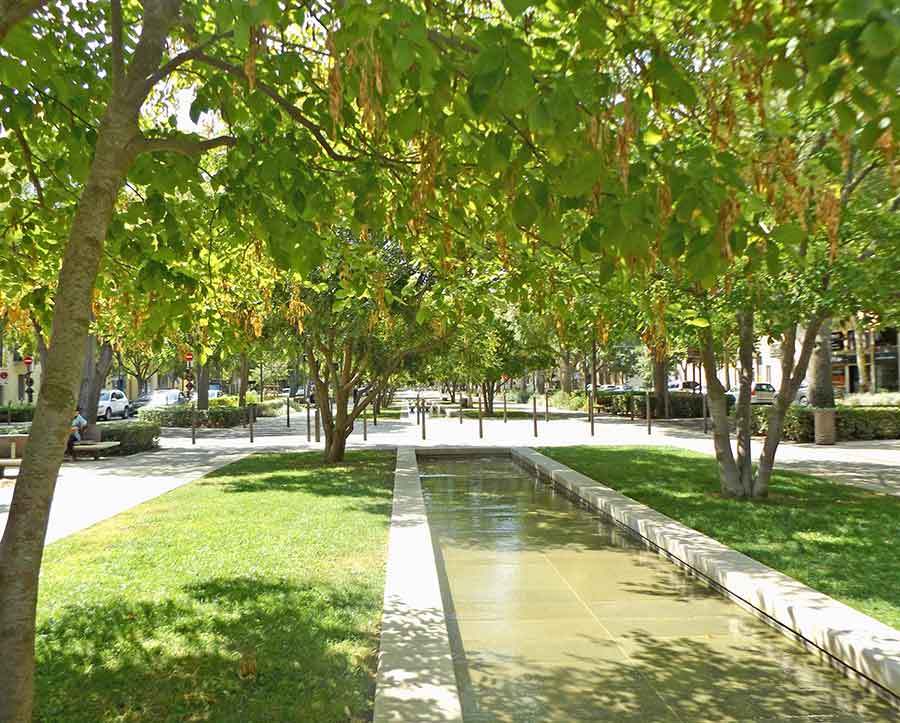
But even away from the Fountain Gardens, in the centre of main avenues there is water, shallow, unpretentious, just coolly flowing along.


Sometimes, as in the modern Place d’Assas, it is combined with statuary, non-mythological, but still symbolic.
Nîmes still appreciates its water origins. So do I.




